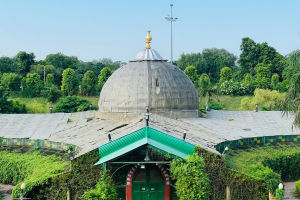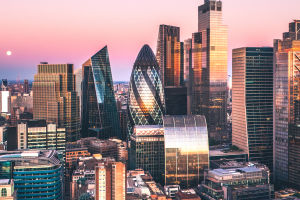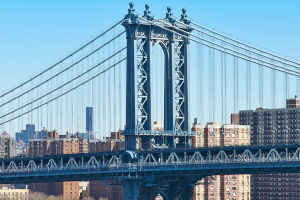Discover the Uncharted Beauty of Kamchatka’s Indigenous Even Villages
This beautiful, mountainous, forested area is home to Kamchatka's indigenous Even people.
The region has two main settlements: Esso, with a population of 2,000, is a blend of Evens and ethnic-Russians, while Anavgay’s 600 inhabitants are mostly Even.
The locals live by reindeer and horse herding, fishing, and hunting, including for bears. In summer, they reach their hunters' lodges and reindeer herds by horse, while in winter, snowmobiles take them across the frozen landscape. Both villages offer a few guesthouses, with locals also renting rooms. They can organize sledge, snowmobile, or horse trips, though it’s best to arrange this in Esso. A trip here is also worthwhile for the thermal springs, folk dance troupes, and, of course, the surrounding nature. You can reach Esso from Petropavlovsk-Kamchatsky by a grueling ten-hour bus ride. The dirt track ends at Esso, leaving the settlements further north isolated and inaccessible during summer. In winter, however, Anavgay serves as the starting point for temporary winter roads that stretch to the far north of the peninsula.
The Evolution of Kamchatka’s Indigenous Peoples
Before the 17th century, Kamchatka was inhabited by the Koryaks, Itelmen, Ainu, Aleuts, and Chukchi. The indigenous Even arrived about 150 years ago, migrating away from expansion in Yakutia or from other indigenous groups who were pushed into Even territory. The Itelmen and Ainu have been assimilated into mainstream society, although many still claim indigenous origins for certain privileges. The Aleuts were relocated by the Soviet-government to the remote Commander Islands, where they still live in one village. The Even, while still herding reindeer and horses, have mostly forgotten their language and are considered fairly "Russified." The Koryaks, who herd reindeer, have their own autonomous region in the northern half of the Kamchatka Peninsula, with the Chukchi living in the far north. Some Koryaks from the Olyutorsky and Penzhinsky Districts have preserved their shamanistic religion and traditional chants.
Khabarovsk: A Surprising Blend of History and Modernity
Located over 8,500 kilometers from Moscow and just 30 kilometers from China, the Far East's second-largest city has a surprisingly cosmopolitan feel. Though cold in winter, summer brings an explosion of greenery that fills the streets and parks. Street cafes open up, and locals enjoy the beach or stroll along the banks of the Amur River. Forts were first built in the 1650s by Cossacks who sought fur tribute from the natives. These forts were soon destroyed by the local Nanai people, the Koreans, and the Chinese, making the area a part of China for over a century and a half. In the late 19th century, the region fell back under-Russian control, and Khabarovsk was gradually built up. Beautiful old buildings from the early days remain, but modern architects have managed to preserve the city’s classical charm. The nearby villages of the Nanai people can be visited, including Sikhachi-Alyan, which features ancient petroglyphs, though the Nanai have become somewhat "Russified."
Komsomolsk-Na-Amure: A Soviet-Era City with a Modern Twist
Komsomolsk-Na-Amure is the largest and most picturesque town along the BAM railway. It lies 11 hours from the railway terminus on the Pacific coast and 6 hours from Khabarovsk on the Trans-Siberian Railway. Named after volunteers from the Komsomol youth organization, it was mostly built by Gulag concentration camp victims, with women from across the Soviet-Union sent to populate the previously all-male city. Unusually for a Stalin-built town, its center features charming, modestly colorful buildings in the Tsarist style, with wide avenues, strollable riverbanks, outdoor cafes, and even a beach. Outside the city, impressive mountains offer trekking, rafting, and skiing possibilities. Several villages of the indigenous Nanai people are nearby, though much of their pre-Russian culture is now preserved in museum displays.
Novy Urgal: A Remote and Fascinating Stop
Dear Lykkers! As you travel for hours or even days along Eastern Siberia’s BAM railway, passing through endless taiga forests and towering snow-streaked mountains, you may be taken aback when the pristine wilderness gives way to Novy Urgal. Founded in 1974 and home to around 6,000 residents, the town’s peeling paint, crumbling walls, and lack of new buildings give it an air of decay. As the largest settlement for 14 hours in one direction and 24 in the other, it stands isolated, with little development. Novy Urgal might not appeal to the average tourist, but for those fascinated by the BAM, Soviet-history, or the Russian-Far East, it offers an intriguing stop.
Petropavlovsk-Kamchatsky: The Gateway to Kamchatka’s Wilderness
Petropavlovsk-Kamchatsky serves as the starting point for most trips to Kamchatka, embodying the Soviet-drive for industrialization in contrast to the surrounding natural beauty. The city itself, with its crumbling Soviet-era apartment blocks and dirty, ice-bound streets, contrasts starkly with the breathtaking landscapes. Despite the city’s industrial vibe, the volcanoes and Avacha Bay surrounding Petropavlovsk-Kamchatsky offer incredible natural beauty. Tour agencies offer opportunities for trekking, skiing, paragliding, and heli-skiing, or the more adventurous can venture into the wilderness with local advice on routes.
Klyuchevskaya Sopka: A Volcanic Wonderland
The towering Klyuchevskaya Sopka, the Northern Hemisphere’s tallest active volcano, stands at 4,750 meters. While the nearby village of Klyuchi may seem like a prime tourist destination, it remains remote and is only accessible with a permit. The village, a collection of wooden cottages and dirt lanes, offers no hotels, but a vulcanologist with over 35 years of experience rents a few dormitory rooms. From Klyuchi, you can trek to a vulcanologists’ cabin at the base of the volcano. In winter, skis or snowmobiles are needed to reach it, while summer brings the risk of bears in the area, so caution is advised. The journey to Klyuchi from Petropavlovsk-Kamchatsky takes ten hours, but during spring and autumn, the journey can be hindered by impassable roads or a lack of ferry service.


